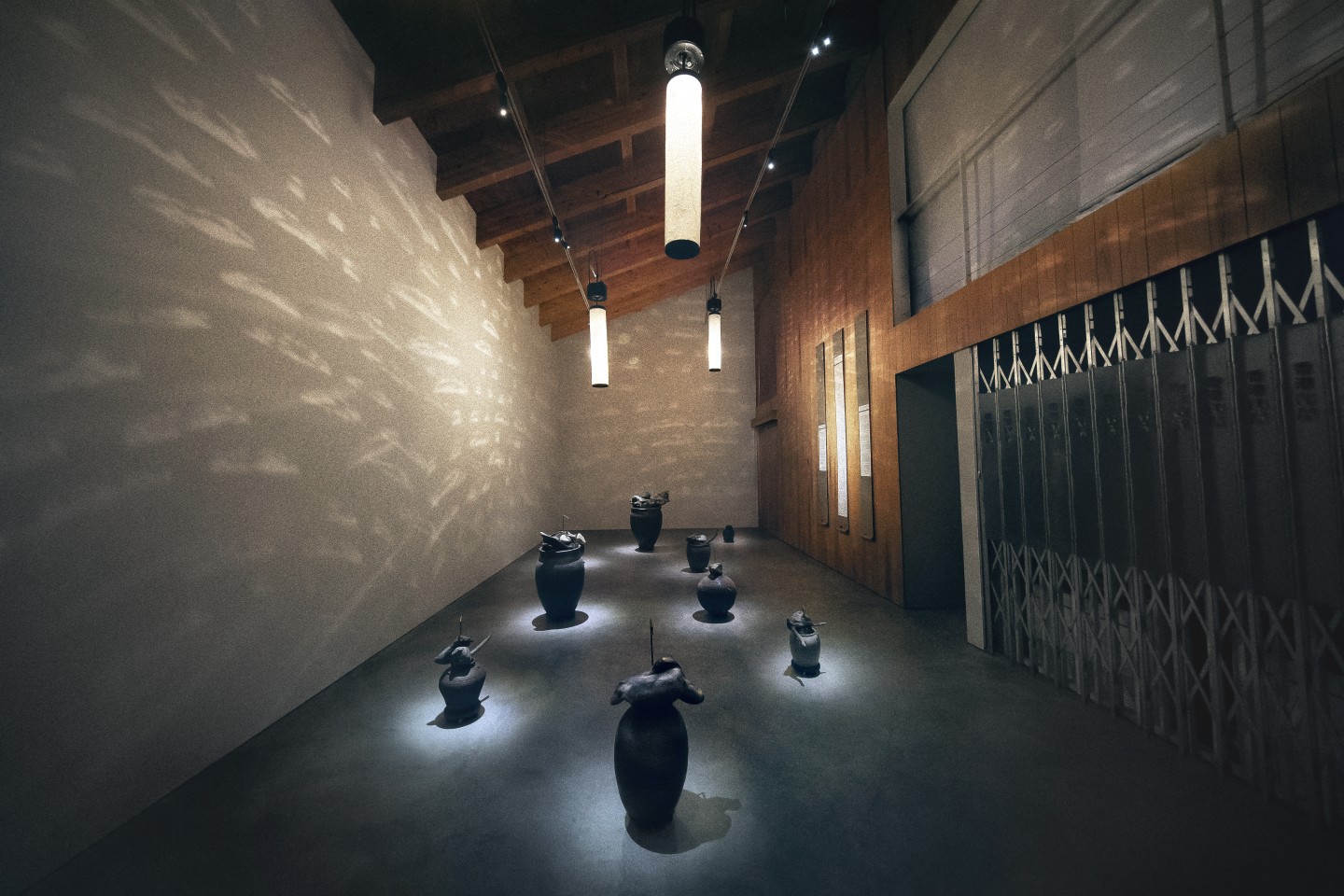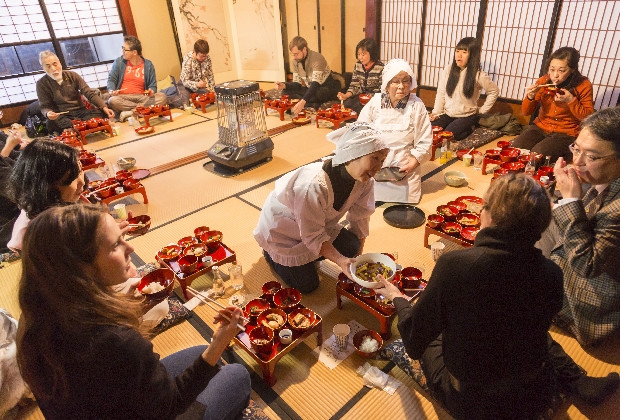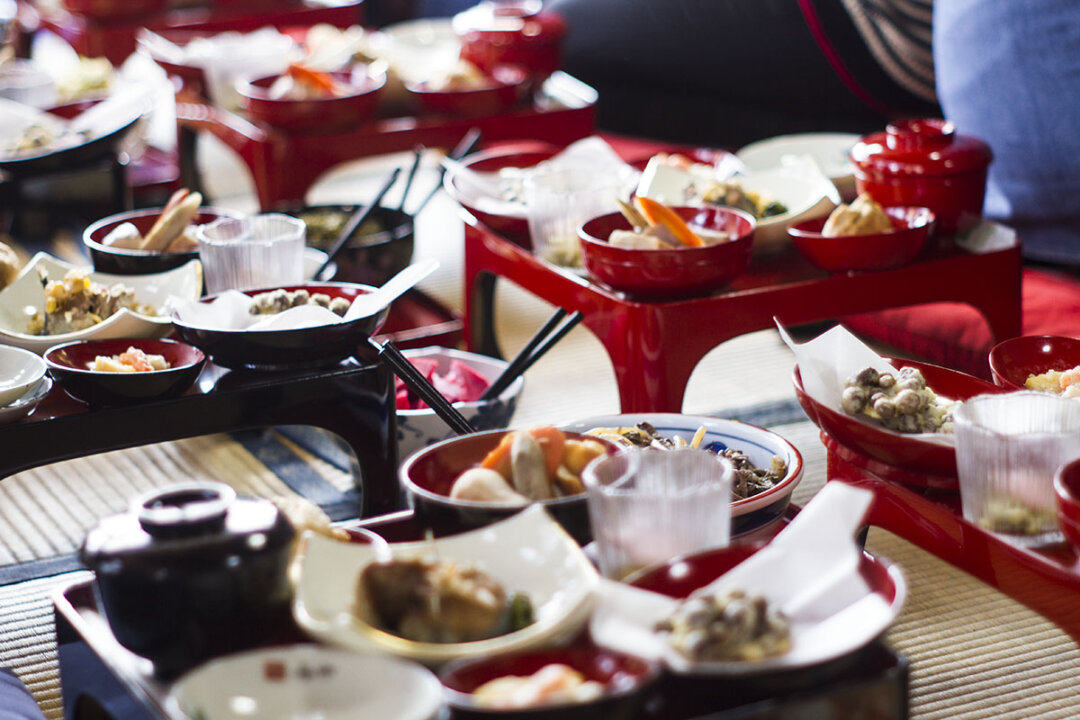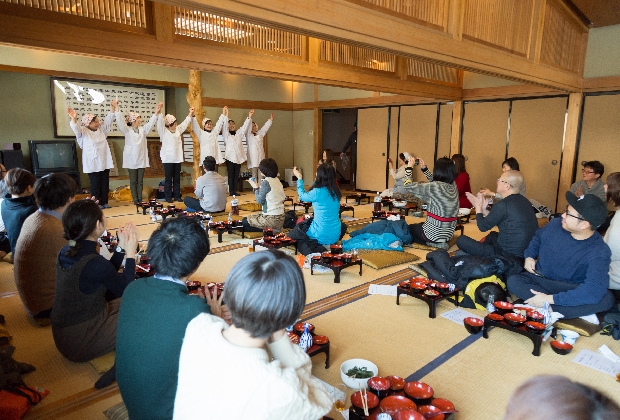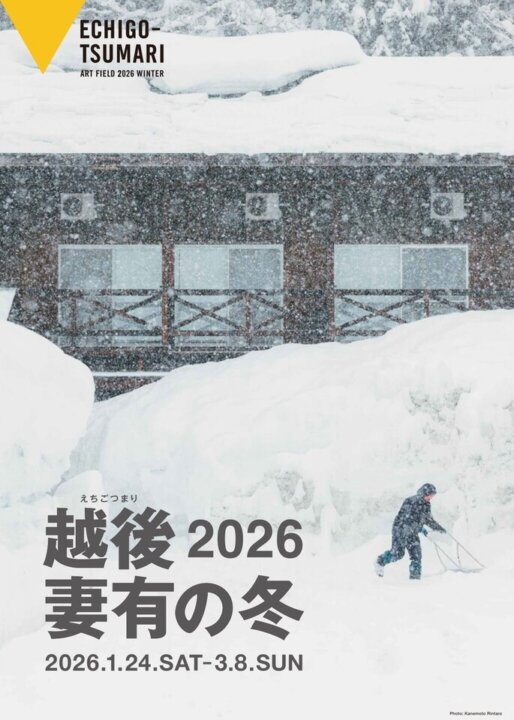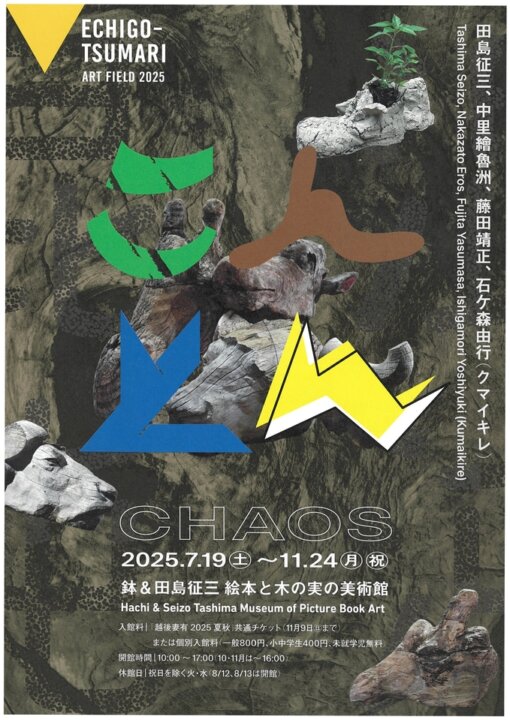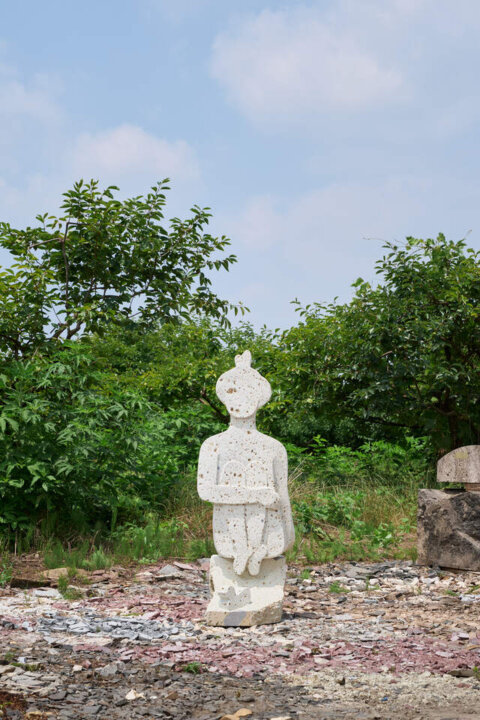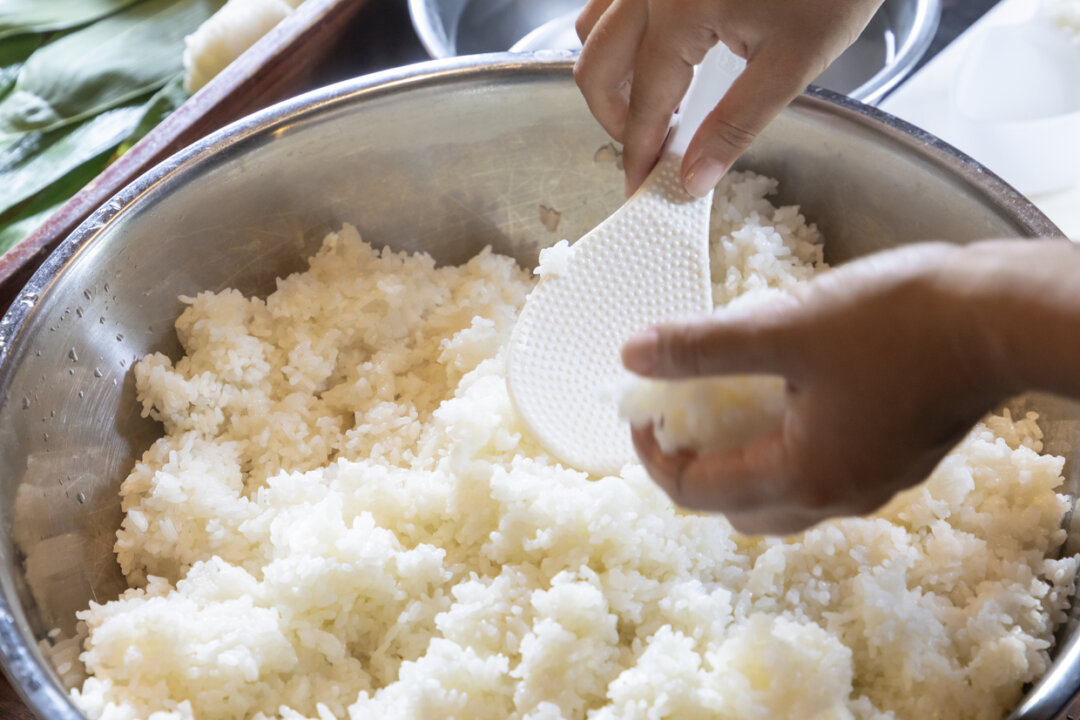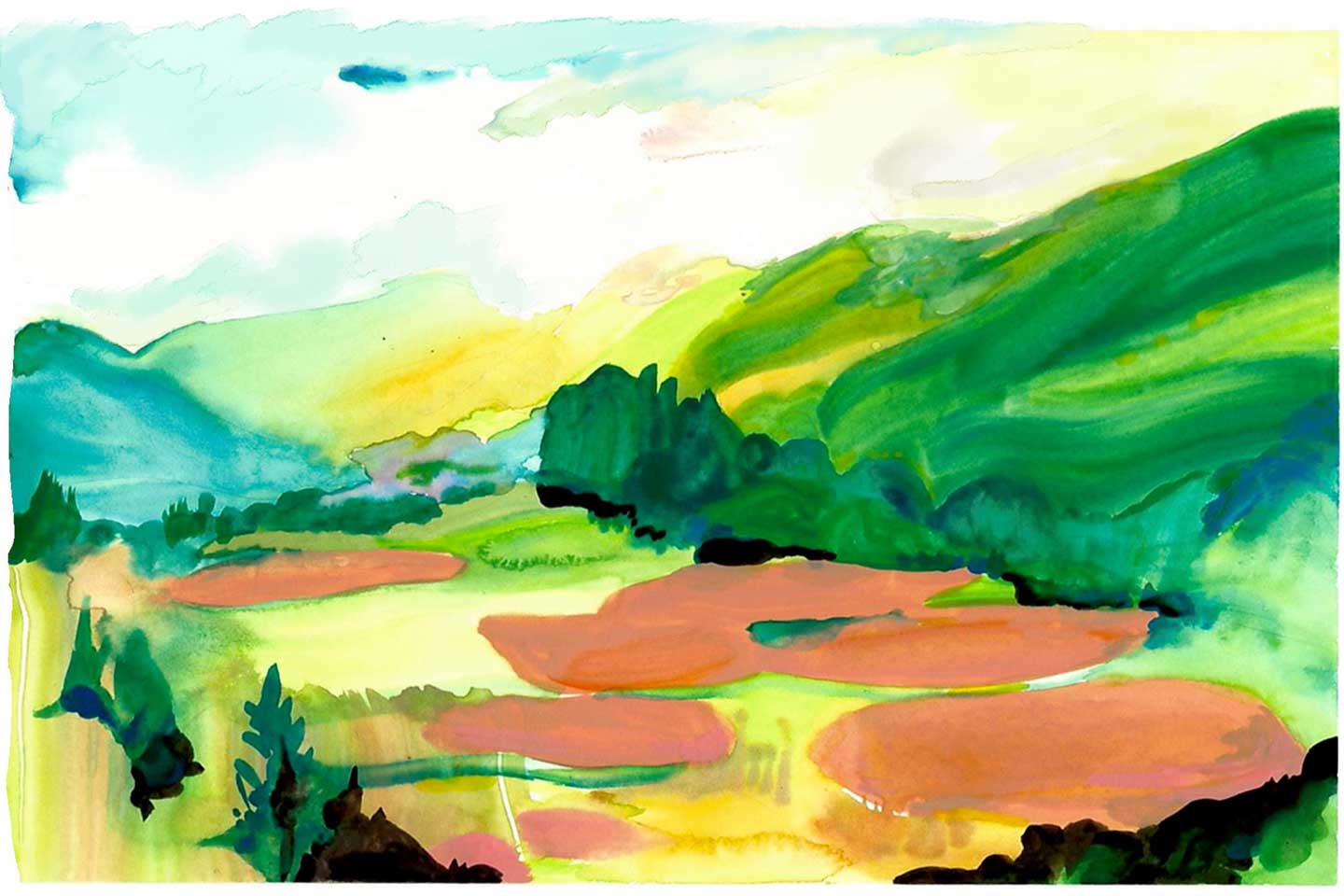
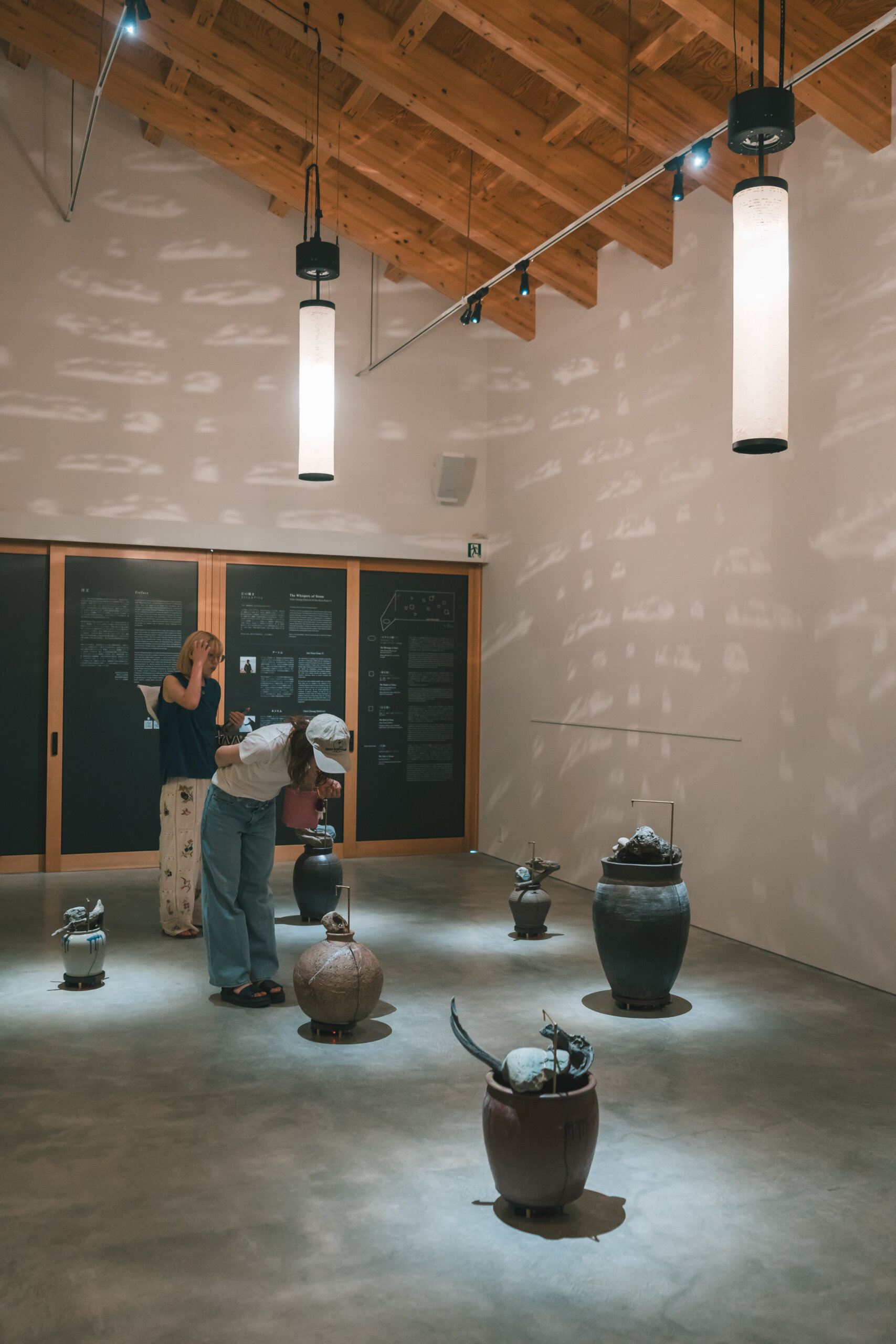
The Hong Kong House in 2025 will host a special exhibition by two artists, Chris Cheung (h0nh1m) and Sim Shum Kwan Yi.
Echigo-Tsumari has a rich Satoyama culture. During their residency in Tsunan, Japan, Chris Cheung Hon Him (h0nh1m) and Sim Shum Kwan Yi were inspired by the natural stones shaped by the Shinano River and the surrounding mountains, which have witnessed the passage of time and ecological changes. They drew creative inspiration from the stones, using them to create an installation that resonates with flowing water and ceramic containers, bringing the sounds of nature into Hong Kong House. Additionally, they present scroll paintings and projections of paper lanterns that highlight the stone formations of Echigo-Tsumari, where each stone form echoes the ecology and history of the region, as if whispering its own story.
Artwork introduction
《The Ode of Stones》 Sim Shum Kwan Yi
A set of 3 hanging scrolls, ink on paper and stones
75 x 22.5 cm; 195 x 22.5 cm; 60 x 22.5 c
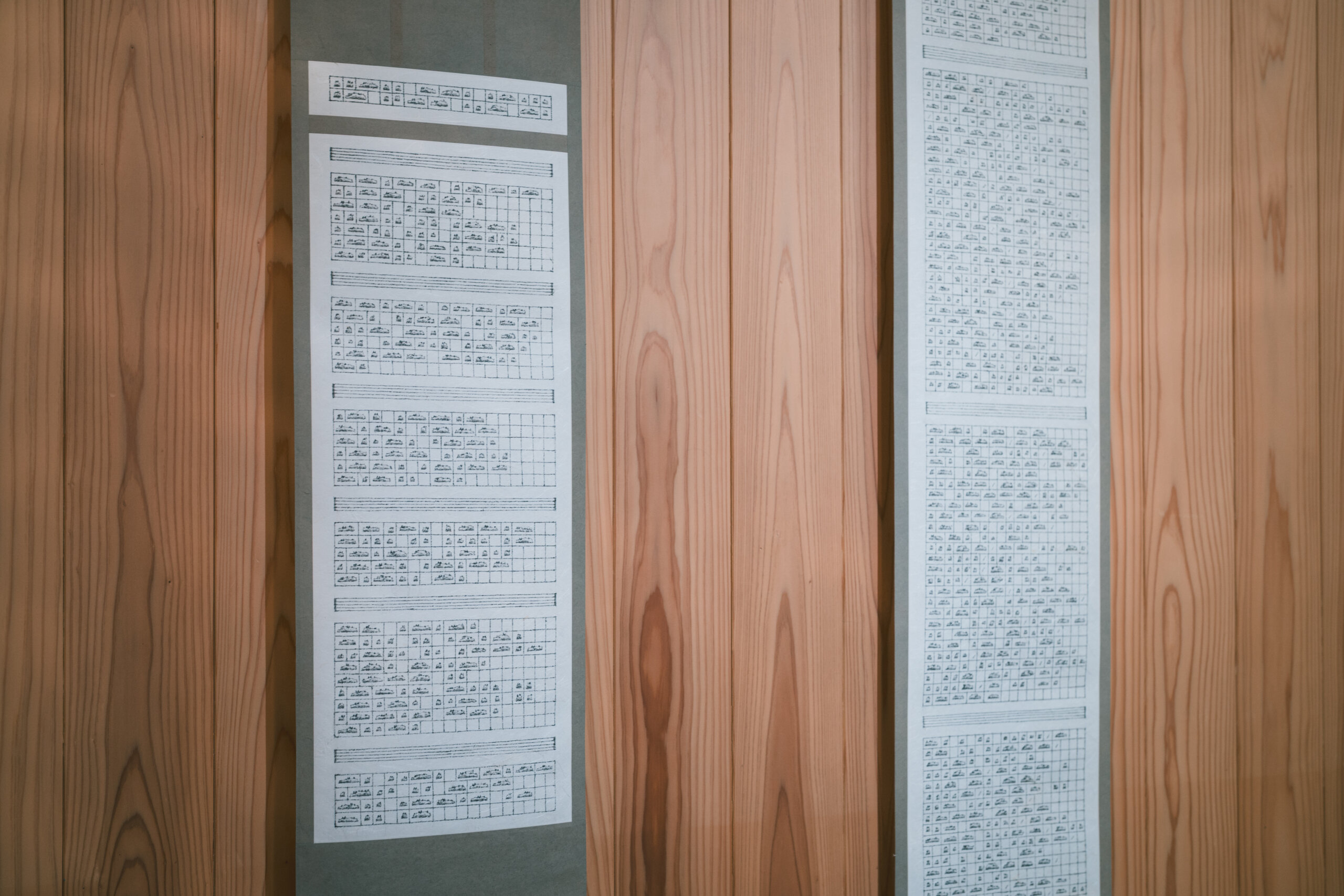
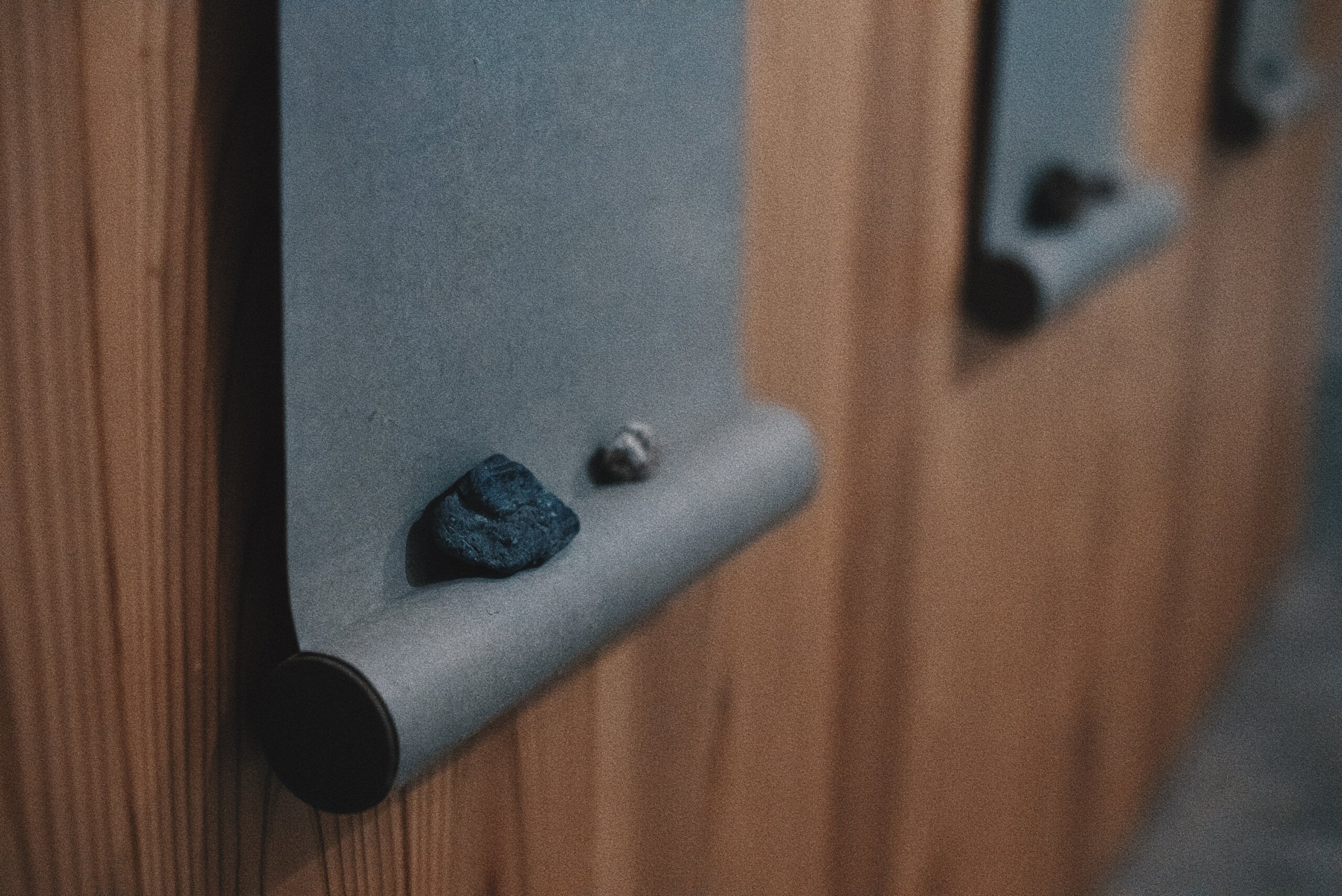
The Ode of Stones references the encoding logic of Wabun and international Morse code, using the shapes of stones as a means for encoding. The codes are separated by a staff, suggesting that the stone codes correspond to the lyrics of songs. The triptych of scrolls depict the lyrics from Echigo-Tsumari’s folk songs Bird Chasing Song and Crow Dance, alongside Hong Kong’s Naamyam song A Wanderer’s Autumn Grief. Beneath each hanging scroll rests a pair of stones collected from Japan’s Shinano River and Hong Kong’s Sai Kung coast. The work expresses reverence for nature, aspirations for abundance and unspoken narratives. Historically, both Bird Chasing Song and A Wanderer’s Autumn Grief address taboo or marginalised subjects, which now resonate silently through the language of stone.
《The Book of Stones》 Chris Cheung (h0nh1m)
Ceramic container, stone, driftwood, metal, plastic and electronic components
Size variable
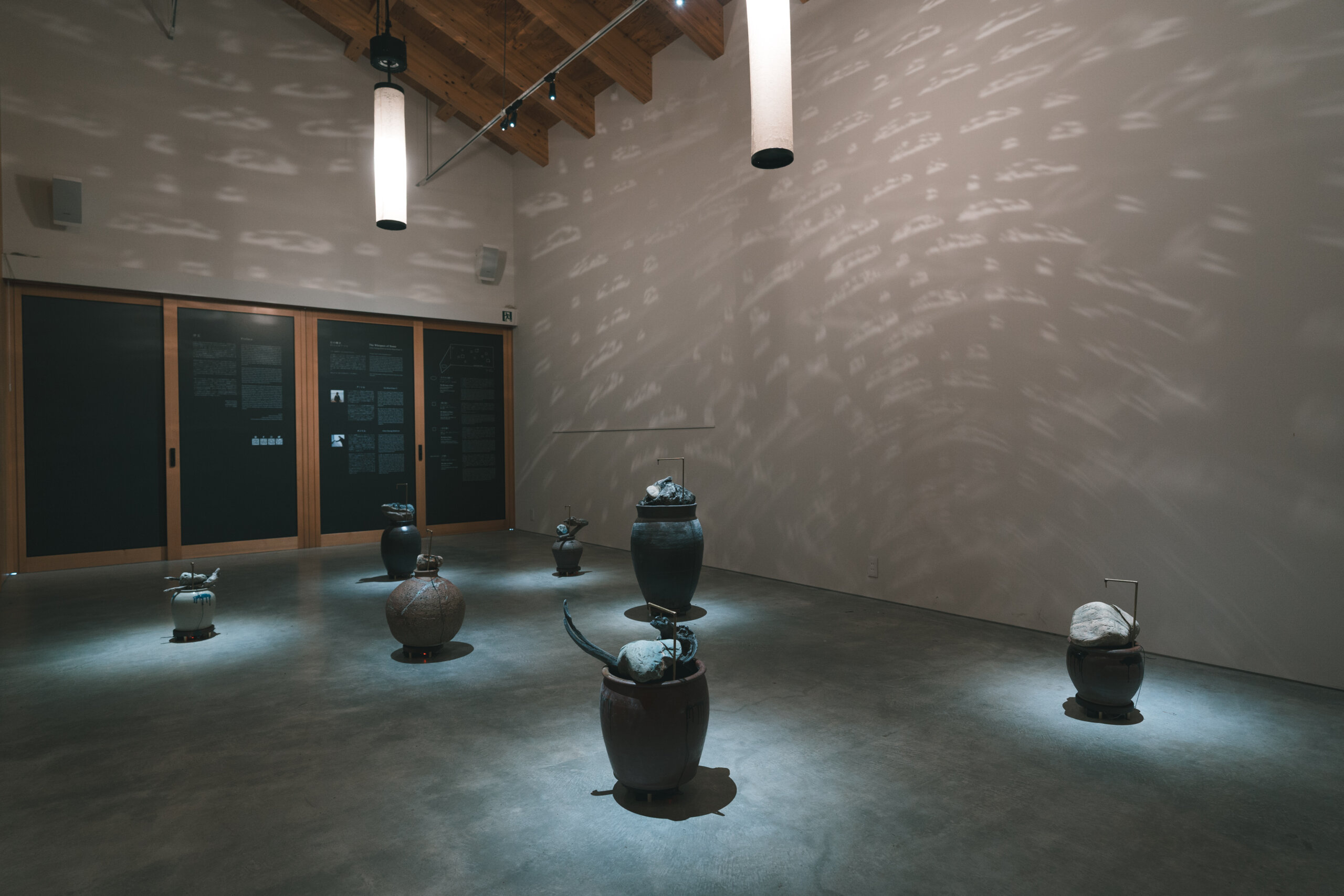
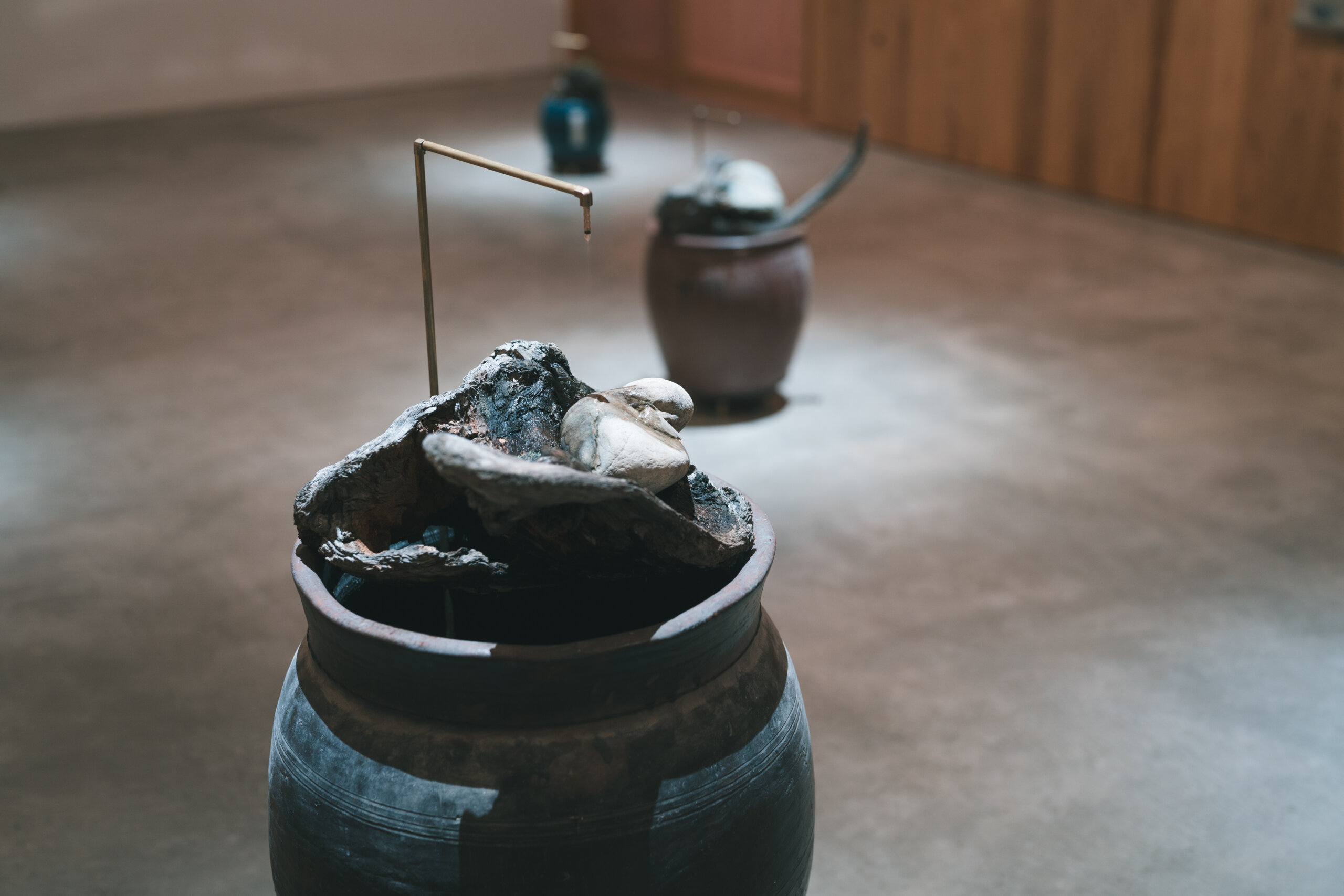
The Book of Stones draws inspiration from the traditional Japanese garden concept “Suikinkutsu”, creating a soundscape that enhances the spatial atmosphere. The installation produces resonant sounds from water droplets falling on stones and containers, helping to restore a sense of calm for viewers. Nine containers of varying sizes were collected from residents of the Tsunan area, including soy sauce tanks used by farmers, century-old family brewing jars, fireproof containers from hot-spring inns, and pottery works by artisans, each holding its own unique historical story. The internal water droplet installation, following the diagrams from The Ode of Stones, releases water droplets according to a preloaded Morse code programme, interpreting the rhythms of three selected pieces at varying tempos.
《The Shades of Stones》 Chris Cheung (h0nh1m) and Sim Shum Kwan Yi
Paper, light bulb, metal, plastic, and electronic components
Size variable
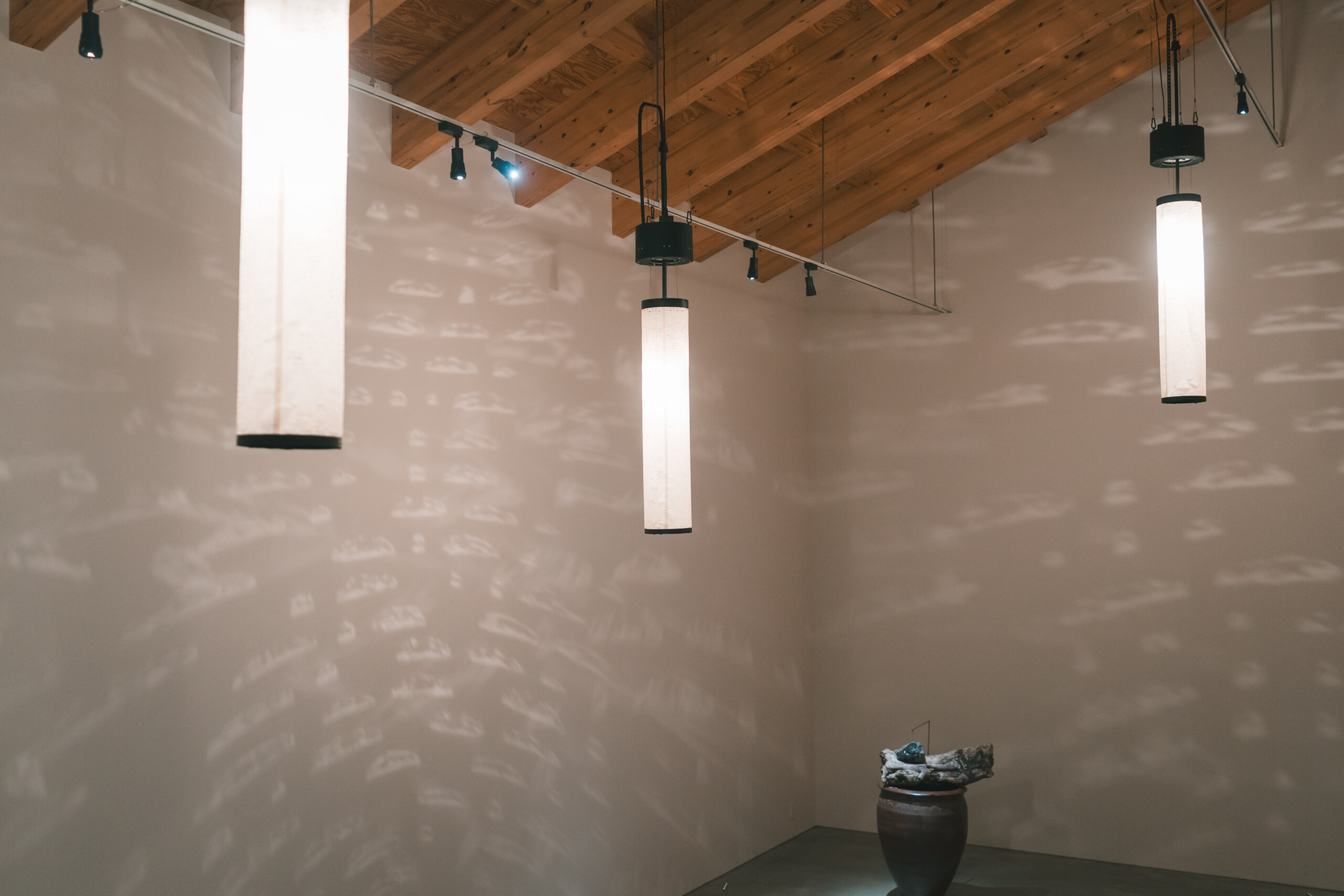
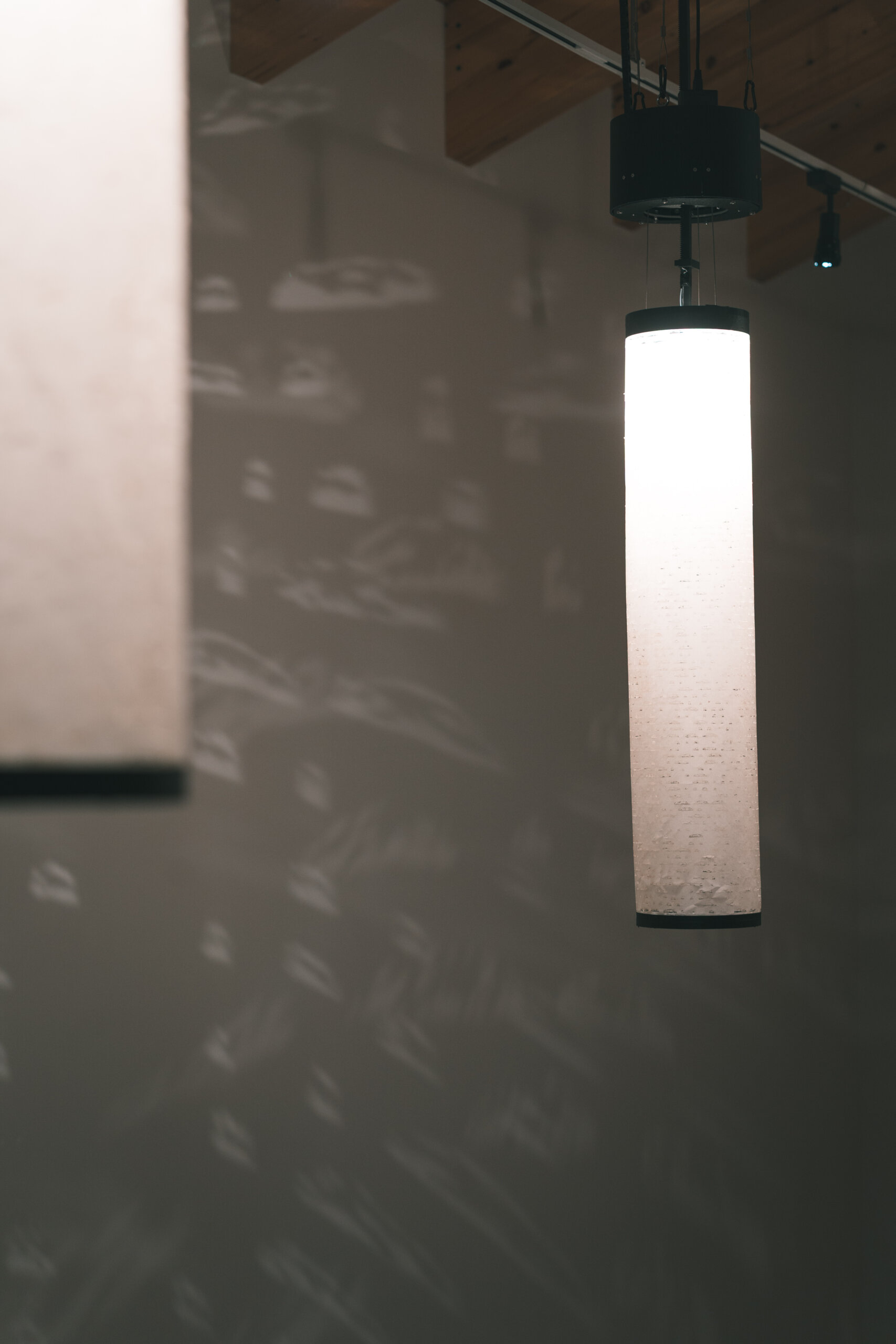
The Shades of Stones was inspired by the lyrics of Hong Kong Naamyam song A Wanderer’s Autumn Grief and folk songs from Echigo-Tsumari, including Bird Chasing Song and Crow Dance. It utilises laser-cut diagrams from The Ode of Stones on Echigo-Kadoide washi paper to create three sets of light installations. The silhouettes slowly rotate up and down throughout the space, and the interplay of light and shadow appears to dance in the air, accompanied by the melodies of another installation, The Book of Stones.
《The Blessings of Stone》Chris Cheung (h0nh1m) and Sim Shum Kwan Yi
Stone, driftwood, EL wire and ink on paper
Size variable
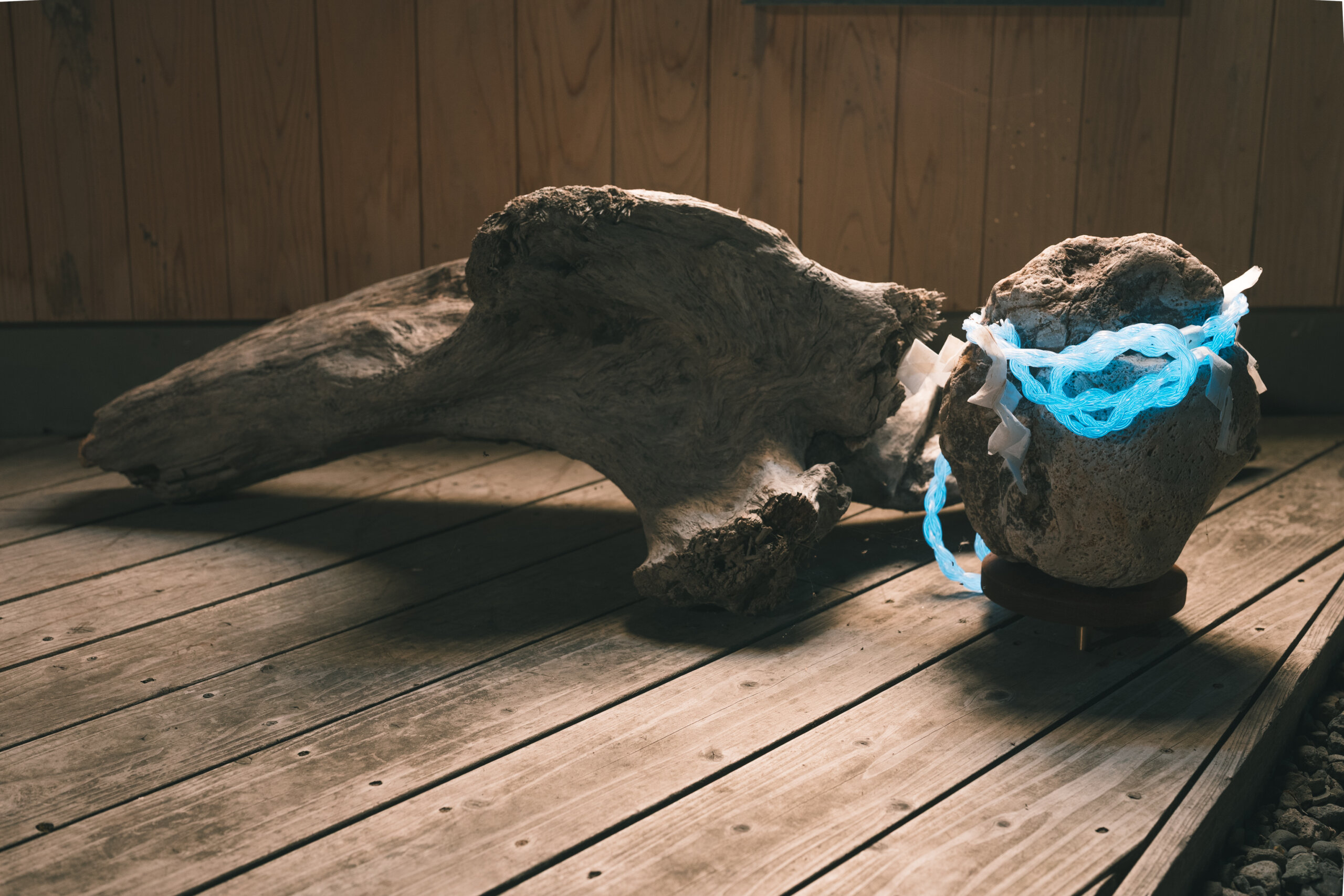
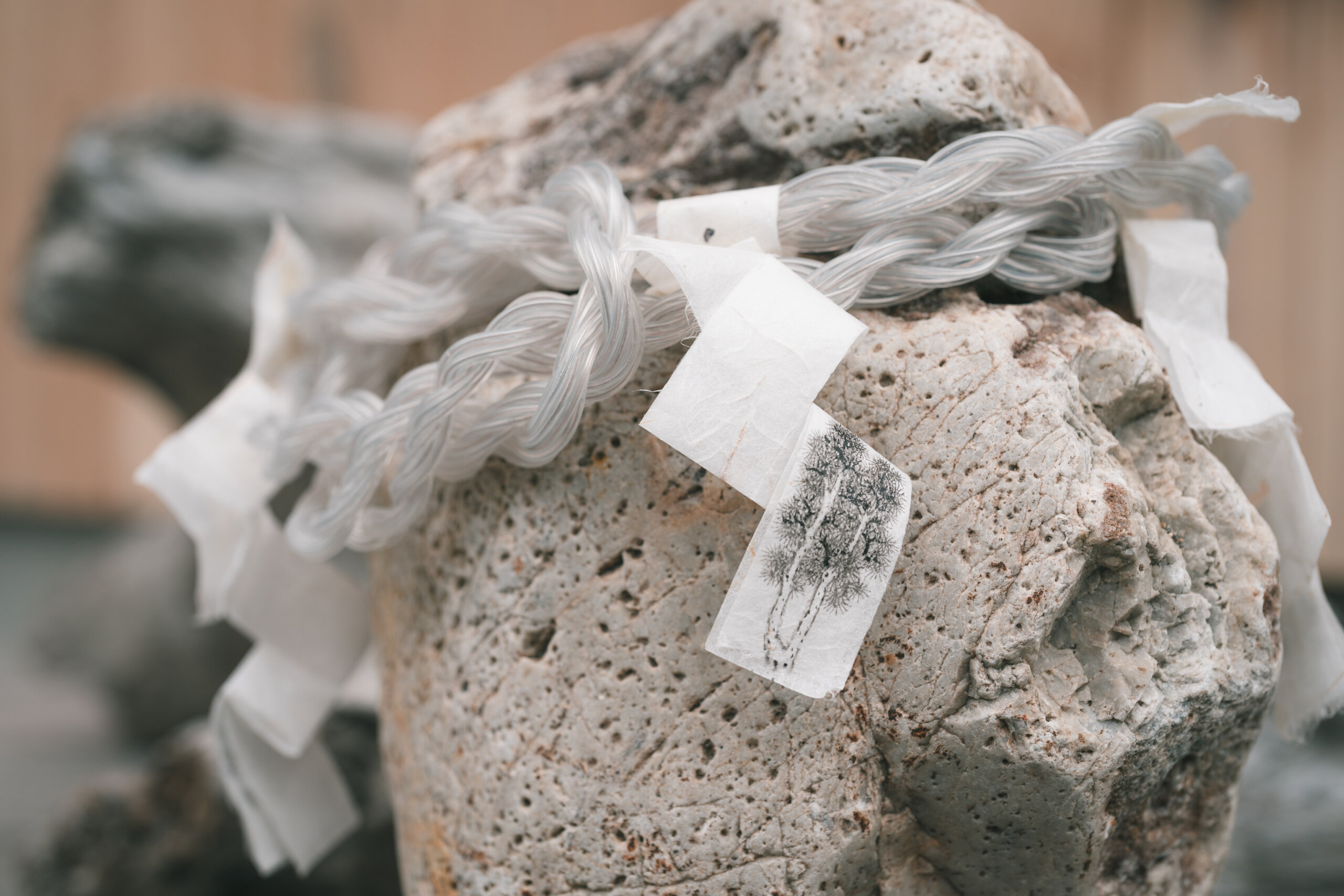
The Blessings of Stone concept was inspired by the artists’ experience with fireflies during their residency in Echigo-Tsumari. The piece features Shimenawa (sacred rope) tied to a stone, while luminous mizuhiki knots (symbolising blessings) cradle a piece of driftwood, pulsing with the flickering rhythm of fireflies, a fragile metaphor for life itself. Twin pine trees are depicted on the shide (paper streamers), inspired by the animated film Grave of the Fireflies, where a mother and child are unable to reunite under the twin pines because of the ravages of war, symbolising a desire for peace and reunion. The work embeds hope amidst fleeting light and shadow, whispering a prayer for a world without conflict.
Workshop
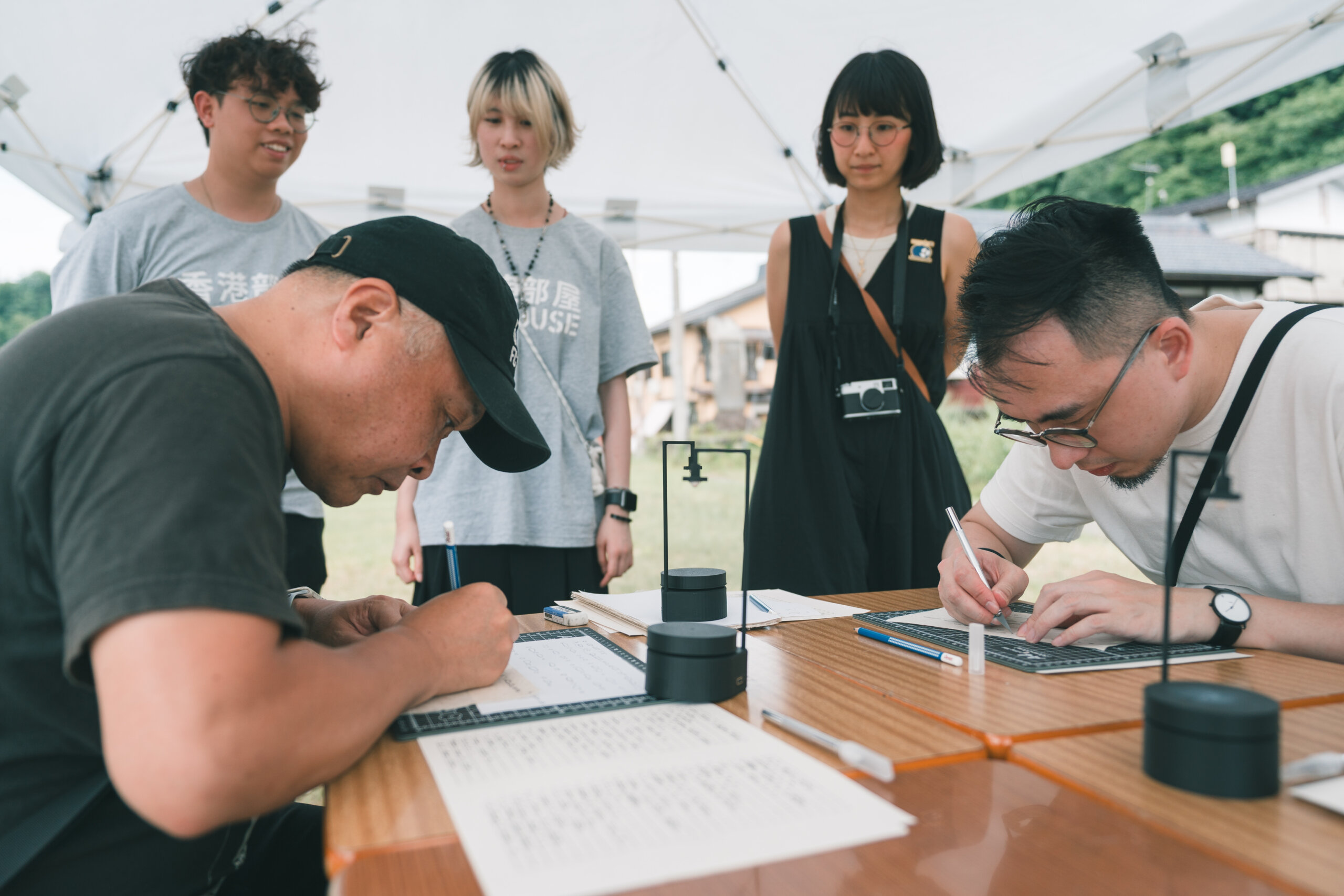
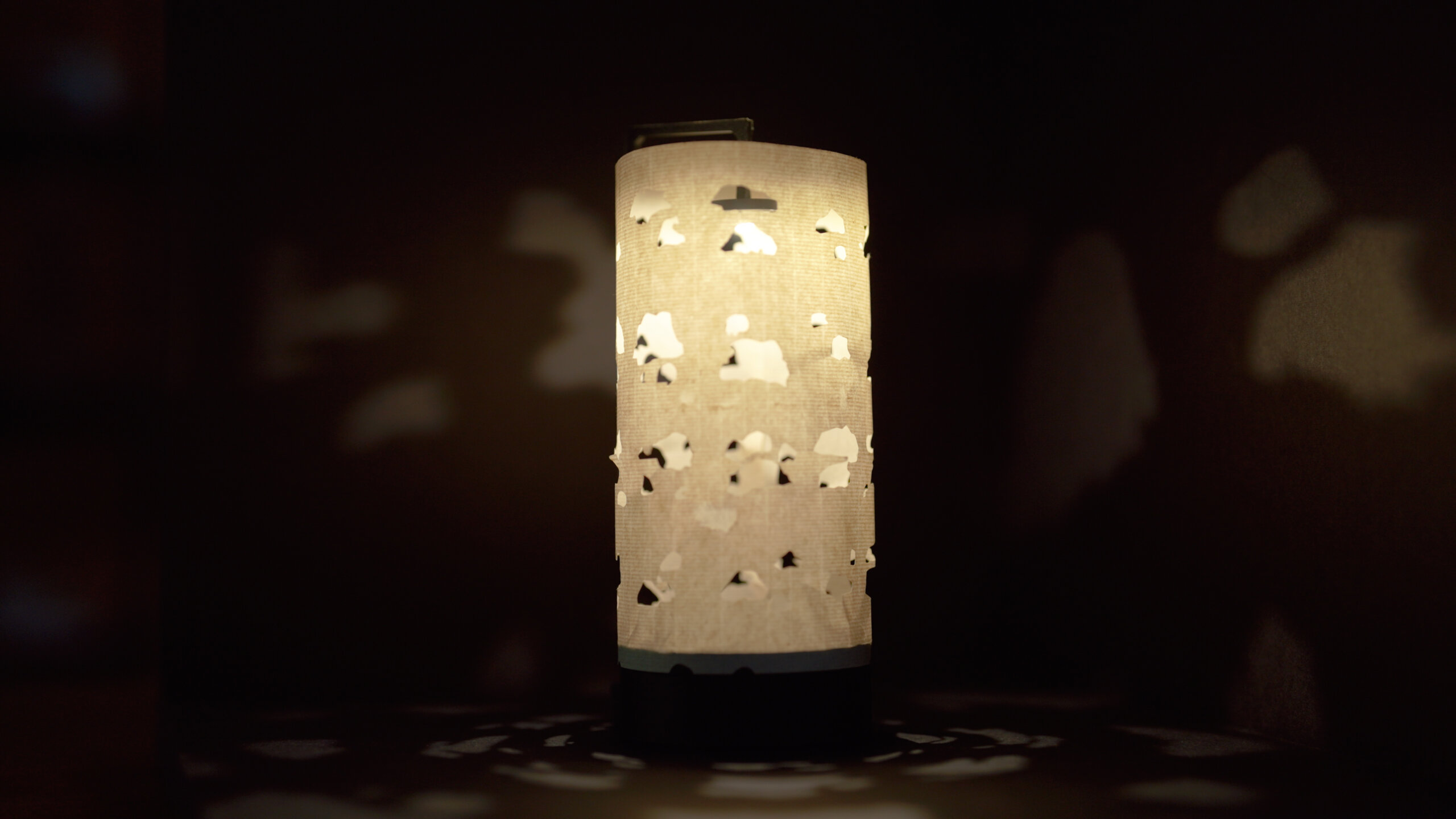
The artists developed a unique language system for water stones, inspired by Morse code. Building on this concept, they conducted a workshop which invited the audiences to create their own light installation, projecting their inner thoughts into the space through light and shadow. Participants also had the opportunity to take their creations home as souvenirs.
Date|2025/7/19(Sat)13:00-14:00、7/20(Sun)14:15-15:15
Fee|Free
Chris Cheung (h0nh1m) and Sim Shum Kwan Yi
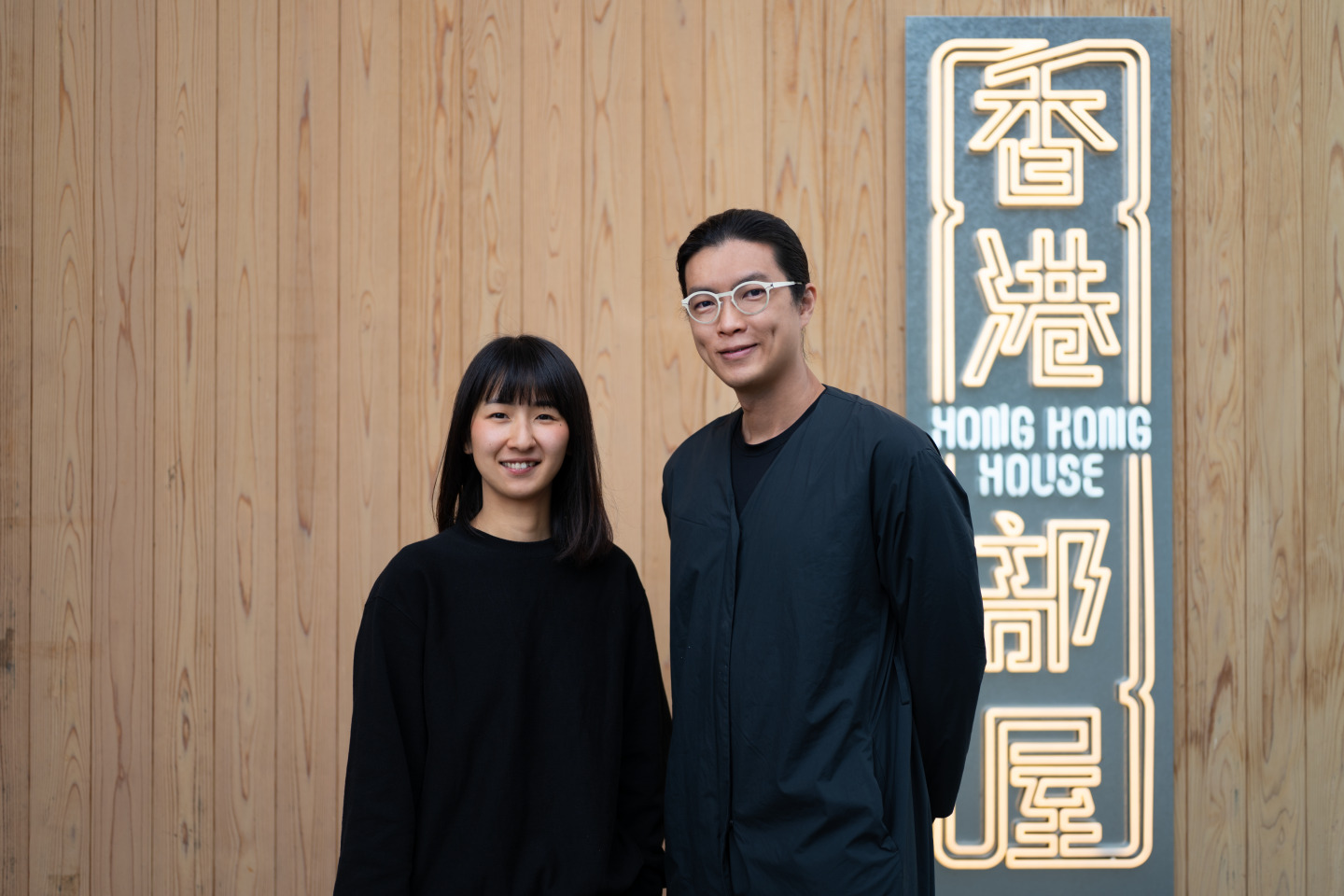
Chris Cheung Hon Him (h0nh1m) is a Hong Kong artist best known for installation art and audiovisual performance. His unique artistic expression and aesthetic perspective blend traditional and futuristic concepts, innovatively interpreting Eastern and Western philosophies. Recent works including Ink | Pulse (collaborated with calligrapher Tong Yang-tze) and Waving Script are commissioned by M+ and Hong Kong Palace Museum respectively. After Snowfall is the latest new multimedia Grand Dance Poem collaborated with Hong Kong Dance Company. In 2025, he was awarded Artist of the Year (Media Arts) at the 19th Hong Kong Arts Development Awards.
In 2008, he established the artist collective XCEPT and XCEED. Their collective works have been showcased in art festivals including Austria, Poland and Brazil, and awarded worldwide, such as Red Dot Design Award in Germany, TDC Awards in New York, USA, New York Art Director Club Young Guns 11, Lumen Prize in the UK, Frame Awards in the Netherlands, GDC11 in Shenzhen, Japan Typography Association, Hong Kong Global Design Awards, Design for Asia Awards. In recent years, he established innovation lab XPLOR and created a platform called FutureTense, focusing on future living aesthetics and education.
Shum Kwan Yi, Sim graduated with a Master of Philosophy (MPhil) and Bachelor of Arts (BA) from the Department of Visual Arts at Hong Kong Baptist University, and completed a semester exchange at Nagoya Zokei University of Art & Design, Japan. Her practice focuses on ink art, through which she explores the contemporary relevance of traditional landscape painting, transforming it into a symbolic language. Her works weave together personal and collective social narratives, addressing themes of societal constraint and displacement.
In 2022, she received the Bronze Award at the Liu Kuo-sung Ink Art Award. At the same year, her solo exhibition “The Unbearable Lightness” was recognised with the D&AD Wood Pencil, New York ADC Bronze Cube, Tokyo TDC Award, Golden Pin Design Award, and Asian Design Silver Award. In 2024, her publication Dust and Cicada Chirping received the Golden Pin Design Award, New York ADC, and Asian Design Merit Award. In recent years, she has actively participated in community art projects, including “Art Kuk Po” (2024), the “Sai Kung Hoi Arts Festival” (2023), and “Lamma Mia” (2021), continually exploring the possibilities of ink art and community engagement. Her works have been exhibited multiple times at Art Basel and are included in the collection of the Ashmolean Museum, University of Oxford.
Hong Kong House
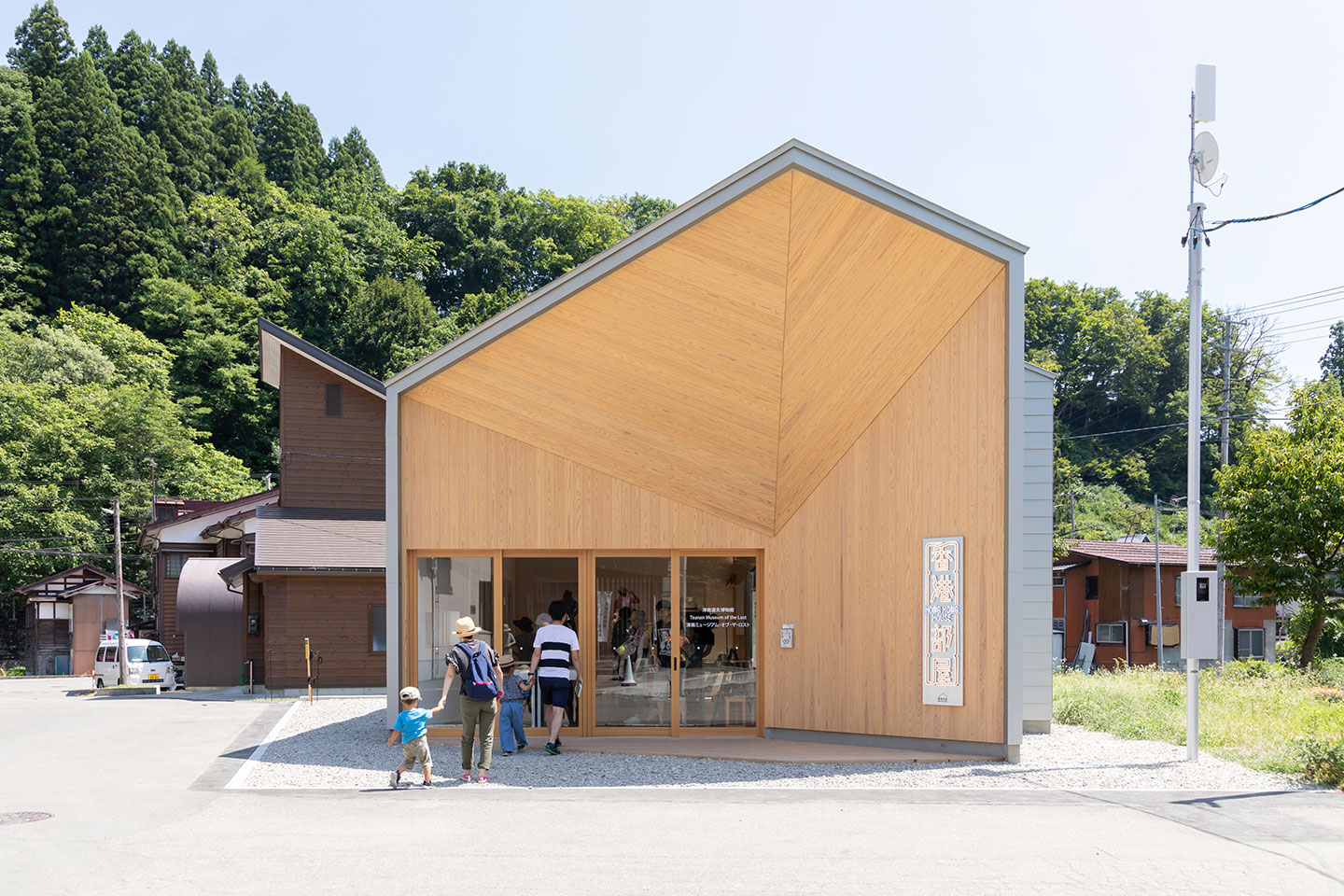
A residency and gallery space built as a platform for continuous cultural exchange between Hong Kong and Echigo-Tsumari. Designed by a winner of the open competition, Yip Chun Hang and Team who has risen their profile through their participation in Venice Biennale in 2012. In co-operation with universities in Hong Kong, Cultural Institutions and local governments, Hong Kong House organises and hosts various exchange programmes throughout the year as well as provides residency space for artists, performers and writers who will have been chosen through open competitions to stay, create and present their works. Click ≫here for details of Hong Kong House.
Photo by Osamu Nakamura
Summary
| Date and time | 7/19(Sat.)~8/31(Sun.) except Tue. & Wed. / Sat., Sun. & Holidays 9/1(Sat.)~11/9(Sun.) |
|---|---|
| Venue |
Hong Kong House (29-4, Miyanohara, Oaza-Kamigo-Kamigo-za, Tsunan-cho, Naka-uonuma-gun, Niigata Prefecture, Japan) |
| Admission | Individual admission ¥600 for adults / ¥300 for children 6-15 years old (Kamigo Clove Theatre and Hong Kong House Admission Fee), or a common ticket for "Echigo-Tsumari Art Filed 2025". |





